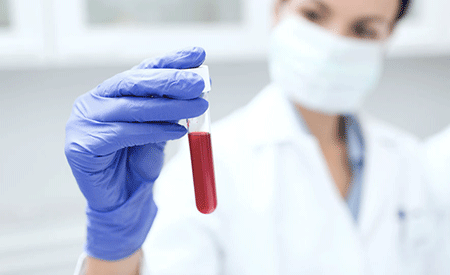Scientists have detected biomarkers in the blood of people with autism linked to their metabolism.
They say the finding may lead to earlier autism diagnosis for some children.
 Biomarkers in 1,100 people
Biomarkers in 1,100 people
The researchers found the biomarkers in 1,100 people with autism.
They say these metabolic signatures “accurately identify” specific subtypes of ASD that are related to abnormalities in metabolizing certain amino acids.
The team were David G Amaral, PhD, of the University of California Davis MIND Institute, and scientists from NeuroPointDX, a division of Stemina Biomarker Discovery of Madison, Wisconsin.
Their study stems from the Children’s Autism Metabolome Project (CAMP), the largest study of the metabolism of children with ASD.
Typical neurodevelopment
The biochemical signatures they found provide insight into how the body metabolizes certain amino acids that are important for typical neurodevelopment.
Children with these metabolic signatures are placed into metabolic subtypes, or metabotypes, that are highly associated with an ASD diagnosis.
The new research may therefore lead to earlier diagnosis of the condition for some children.
So far no reliable, objective biomarkers have existed to help in diagnosing ASD. Experts still have to diagnose the condition by observing an individual’s behaviour.
Many children miss opportunities
While a diagnosis is possible in children as young as 24 months, the average age of ASD diagnosis is around four years. As a result, many children miss opportunities for early educational and medical intervention.
Elizabeth Donley, chief executive of NeuroPointDX, is co-author of the new research. She said: “Using a metabolomics approach to detect ASD holds substantial promise for the identification of objective ASD biomarkers because metabolism is sensitive to interactions among the genome, gastrointestinal microbiome, diet, and environmental factors that all contribute to an individual’s unique metabolic signature.”
She added: “Metabolic testing can provide important biochemical signatures that help identify disruptions in biological processes that underlie an individual’s ASD.”
The scientists compared plasma metabolites from 516 children with ASD with those from 164 age-matched, typically developing children from the CAMP study. They were able to stratify the ASD children into sub-populations based on shared metabolic signatures.
Imbalances
They identified three ASD-associated Amino Acid Dysregulation Metabotypes (AADM). The markers were imbalances in glutamine, glycine, and ornithine with lowered branched chain amino acids (BCAA: leucine, isoleucine, and valine).
These three AADMs together were present in 16.7 per cent of the CAMP ASD subjects.
The new study is titled ‘Amino acid dysregulation metabotypes: potential biomarkers for diagnosis and individualized treatment for subtypes of autism spectrum disorder’.
Related:
- Test developed to detect autism
- Test reveals anxiety as second diagnosis
- New test heralds early autism diagnosis
- Delays in diagnosis deny new therapy
Published: 31 December 2018

















